Are you going to Europe for the first time? Or maybe thinking about your first independent trip after a few tours? If so, here are some great European travel tips based on the Twenty Top Topics I’ve seen people ask about on travel forums, plus stuff I’ve learned based on personal experience.
Maybe you’re going to a place where you don’t speak the language, or you’re going to rent a car or rely on a mode of transportation that is unfamiliar. Whatever it is, this guide is for you.
Seeking travel advice is wise, but to be honest, there just aren’t as many different answers as there are different questions (or different ways of asking the same question). That’s why I compiled these Twenty Top Topics
This is not a textbook or a study guide or a travel guide. You probably won’t want to read it through from start to finish. It is meant, rather, to be used as a reference. You’ll find the answers to many common questions below, but in many or most cases, good online resources exist to provide thorough guidance. Every topic below includes links to these resources.
Update
I originally posted this article on July 18, 2018. I have always planned to update it regularly, but this is the first update. I’ve added some new information, and in the resources for each topic, you’ll find some updated links with more current content.
Most of the advice I share on this page is targeted to an American audience. That doesn’t mean none of it is useful for those who live in other countries. But feel free to skip over the parts that aren’t relevant to you. And while the focus is on European travel, many of the topics below apply to travel all over the world.
- Arrival
- How to Pay
- Where to Stay
- What to Eat and Drink
- Tours
- Tipping
- Trains and Buses
- Flying Within Europe
- Renting a Car
- Overcoming Language Barriers
- Guidebooks
- Smartphones, Tablets, Laptops, and Other Technology
- Electricity, Adapters, and Converters
- Weather
- Clothes and Shoes
- Luggage and Packing
- Staying Healthy and Avoiding Injury
- Travel Insurance
- Pickpockets and Travel Scams
- Responsible Travel
1. ARRIVAL
When you visit a foreign country, you will need to pass through passport control (also called “immigration”) and customs. Passport control is the place where the government of the country you’re visiting identifies you and determines whether to allow you to enter the country. Customs is the governmental authority that monitors the flow of goods, including animals, plants, food, hazardous materials, personal items, currency, and items of commerce, in and out of the country. Customs is responsible for collecting tariffs, also known as customs duties.
As a tourist, in the simplest circumstance, you board a plane in the USA and then arrive in your destination country. After you deplane, you go through passport control. Your passport will be examined and stamped. Then you will collect your checked luggage, if any, and proceed through customs. For most tourists, you will have nothing to declare, and you will simply walk past the customs inspectors and out into the public area of the airport.A few things can complicate the process, so here is what you can expect depending on your specific scenario.
Passport and Visa
Most countries require that your passport be valid for six months beyond the conclusion of your trip. So if your passport is soon to expire, be sure to think about getting a new one. If time is of the essence, you can pay extra for expedited service. (I just renewed my passport, which was set to expire next year. My new passport arrived in the mail exactly two weeks after I mailed in the application. But your mileage may vary, so it’s best to allow extra time, at least six weeks before your trip.) If you are an adult renewing your passport, you can apply by mail; otherwise, you need to apply in person. (See Resources below for instructions from the U.S State Department.)
The name on your airplane ticket must match the name on your passport. If you go by a nickname, don’t use your nickname to book your ticket. I’ve read stories about people who had a nickname on their ticket, and they were admitted at passport control, though it caused some delay. Keep in mind, though, that the airline may deny you boarding if everything isn’t in order.
Middle names don’t matter. You don’t have to have have your middle name on your ticket.
A visa is a document issued by the country you are visiting indicating that you have permission to enter. Visas are currently not required for Americans traveling to any countries in Europe for stays under 90 days, but be sure to check for the most current information, as things can change with short notice. (See Resources below for a list of visa requirements.)
Schengen and non-Schengen Countries
Currently 26 countries in Europe are part of the Schengen area. For purposes of passport control, once you arrive in the Schengen area, you can pass freely throughout these 26 countries without any additional border checks.
Note that the Schengen agreement is different from the European Union (EU). Some EU countries are not part the the Schengen area, and some countries in the Schengen area are not members of the EU. And while passport control is shared across the Schengen area, customs enforcement is carried out by the EU.
See the list of Schengen area countries under Resources below.
ETIAS
Starting in mid-2025, most visitors to most European countries will need to apply for a travel authorization. ETIAS, which stands for the “European Travel Information and Authorization System,” has been delayed several times, so there’s no certainty it will indeed go into effect on schedule. But if you are planning travel to Europe in 2025 or after, it’s worth checking out the website (under Resources below).
Connecting Flights in Europe
If you are flying on a single ticket with a connection in the Schengen area to another Schengen country, you will go through passport control at the first airport. The second flight is, for all intents and purposes, a domestic flight within the Schengen area.
If you are connecting outside the Schengen area, you will go through passport control twice: first when arriving at the connection airport, and again when entering the Schengen area.
When you go through customs depends on which airports are within the EU. The various scenarios can be complicated, so check out customs controls in the EU when traveling by air. In most cases, your checked luggage will go through to your final destination, while your carry-on will be subject to customs inspection at the first airport. But you may need to collect your checked bag, go through customs, and then recheck to your final destination. And it is possible you will need to go through customs again, as some countries have additional requirements.
As described above, customs is typically a mere formality of walking past customs officials, so you shouldn’t worry about it.
You should always be sure you have a long enough connection to go through passport control and make your way to your connecting gate. In some larger airports you will have to change terminals. I generally won’t book an itinerary with a connection of less than two hours. But if you do, it’s best to book directly with the airline, so that they will be on the hook for getting you to your final destination if you miss your connecting flight.
Resources
- U.S. Passports (State Department)
- Visa Quick Check
- List of Schengen Area Countries
- Official ETIAS website
- Customs controls in the EU when traveling by air
- US Customs and Border Protection Preclearance
- Seamless travel on AirCanada (for connections between the US and Europe via Canada)
2. HOW TO PAY
Cash is still accepted in most places. The exception is anyplace with an automated payment system, such as gas stations where no attendant is on duty and some train stations and metro stations. The best way to acquire cash in the local currency is with your ATM card. Don’t bring a lot of cash from home, and don’t bother acquiring Euros or other currency in advance. (I usually have €10 or €20 plus some coins left over from my last trip, and that’s usually enough to get me to where I’m staying. Then I find an ATM and get what cash I think I’ll need.
Credit Cards
I use mostly credit cards to pay for things when I’m traveling, for a few reasons:
- Each trip to the ATM is an opportunity for someone to try to rip me off (see Pickpockets and Travel Scams below).
- Each trip to the ATM means paying a fee of some kind. You aren’t exchanging money; you are buying currency. And the seller has to make a profit. Credit cards are processed in the local currency, and then the bank makes the conversion when they bill you. You don’t have to buy as much local currency if you mostly pay with a credit card. (Note: I use credit cards that do not charge a foreign transaction fee. You should too.)
- With a credit card, I’m not liable for bogus charges. If it gets lost or stolen, well that’s bad, but I won’t lose any money.
But this is really a personal choice. Do what you prefer.
If you do use a credit card, be aware that European credit cards work differently from those provided by most financial institutions in the USA. Both incorporate what’s called an EMV chip. (EMV stands for “Europay, MasterCard, and Visa,” which are the three companies that began the chip initiative.) The magnetic stripe embedded in credit cards is mostly not used anymore, although some merchants that have not upgraded to support EMV chips still use it. But the chip technology in the US is what is generally called “Chip-and-signature,” whereas Europe and Canada use a technology called “Chip-and-PIN.”
With Chip-and-PIN cards, rather than signing to approve the transaction, you enter a PIN into the card reader. This is more secure, because a successful transaction requires that four-digit PIN. Many self-service kiosks in Europe require Chip-and-PIN credit cards.
Resources
- List of European currencies by country
- Rick Steves’ cash and currency tips for Europe (Be sure to check out the “Related Articles” he links to in the upper right.)
- An excellent explanation of EMV chip technology
- Guide to Chip-and-PIN credit cards
- Where Is the Best Place to Exchange Foreign Currency? (US News & World Report)
- Where to Exchange Currency Without Paying Huge Fees (nerdwallet)
3. WHERE TO STAY
Obviously, the choice of where to stay is specific to the places you are visiting. What I want to address here is the pros and cons of different kinds of lodging and different types of neighborhood. And I have some advice on how and when to book lodging. Here are some of the options you have when deciding on accommodations in Europe:
Hostels
Hostels used to be for young people, but that’s no longer the case. While there are some youth hostels with upper age limits, many hostels throughout Europe welcome visitors of all ages.
The obvious advantage to hostels is cost savings. You may have to pay extra for a private bath (if that option is available) or even for bedding. And you may not always get a private room. But if you’re willing to sacrifice some privacy, you can save a bundle.
Consider, for example, the Circus Hostel in Berlin, which is a very highly rated hostel on TripAdvisor and Booking.com, and is recommended in Rick Steves’ Germany guidebook. Here you can sleep in a room with 8–10 beds and a shared bathroom for very reasonable rates. More expensive options include dorm rooms for 4–6, private rooms with shared bath, and private rooms with private bath. All these options are remain well below hotel prices. The Circus Hotel (run by the same owners as the hostel, and located right across the street) has rooms for a much higher nightly rate, and hotel room prices elsewhere in Berlin can go a lot higher.
Another advantage to hostels is the opportunity to meet fellow travelers from all over the world. There is a certain camaraderie that exists among the denizens of hostels. You may get together for meals or acquire some activity partners.
On the downside, hostels will not offer the same level of privacy as a hotel, at least not without paying nearly as much as you would for a comparable hotel. And they don’t have the same services that many hotels offer. It’s important to know what the culture is like in a hostel. Some are more youth oriented and have more of a party atmosphere than others.
Is staying in a hostel right for you? Here is an article that describes what it is like.
Hotels
There is a huge range of hotel types. In most cities you can find a wide range of hotels to fit every budget and every kind of traveler. Hotels can be large, impersonal, and sterile, catering to business travelers and tourists seeking comfort and a wide range of amenities. But they don’t have to be. You can find hotels that feel like a home away from home.
It is so easy nowadays to research hotel options online. Here are some of the best sites for finding hotels (and other accommodations). Most of these have an app for iPhone and Android.
A word of warning: many sites that allow you to book hotels are all about getting you to complete the booking. I recommend you start your search by reading about some of the available options. Make a list of the ones that appeal to you based on location, price, character, amenities, and user ratings. Then read about them at other sites to compare prices and reviews. Visit the hotel web site too, and see how they present themselves. (Also, you may get a better price if you book directly from the hotel.) Don’t be in a hurry to book the first place you find.
Alternative Lodging
You can find very different experiences—including the kind of experience that can create memories to last a lifetime—staying in places that are not typically geared toward tourists. There are many small B&Bs, guesthouses, and inns that offer a more personal and homelike experience while still catering to travelers and thus understanding their needs. There are also apartments, convents and monasteries, house-swaps, and couches, where you can find unique opportunities to connect with locals or live in a true home away from home.
These alternatives are often cheaper, and sometimes significantly cheaper, than hotels. But the real advantage to staying at a place where you aren’t among a lot of other tourists is that it is the best way to feel connected with your destination. Rick Steves says it best:
As far as I’m concerned, spending more for your hotel just builds a bigger wall between you and what you traveled so far to see.
Reid Bramblett of ReidsGuides.com offers a ton of recommendations for types of alternative lodging and how to book it (check out Resources below). I guarantee you if you look at his suggestions, you’ll find at least one or two you’ve never considered. I’ll give him the last word in this section:
There are dozens of hotel alternatives, from Alpine shacks to Tuscan villas, farmhouse B&Bs to hostel dorms, rental rooms to residences, and campgrounds to castles to convents to cottages.… Hotels aren’t the be-all and end-all of lodging options in Europe. In fact, for the most memorable trip, they might should be your last choice when it comes to looking for a place to stay for the night.
Neighborhoods
Pretty much every small and medium-size city in Europe has its old town or historic district. Most of these are UNESCO World Heritage Sites.
Without a doubt, these historic centers are the parts of the city you will be most interested in seeing. But does that mean you should stay in those neighborhoods?
The answer is, it depends.
As a place to visit, you maybe can’t beat the historic center, but as a place to live, it may be more expensive and offer a less-than-authentic experience of life in the city. The streets will probably be lined with souvenir shops rather than groceries and pharmacies. Restaurants in the neighborhood are likely to be overpriced and geared toward (not to mention clogged with) tourists.
Get away from the old town and you’ll find characteristic neighborhoods where real people live and work. If you want to experience something truly authentic when you visit a European city, consider staying outside the touristic areas. In large cities like London, Paris, or Berlin, this is easy, because (1) places of interest to tourists are scattered all over the city, and (2) public transportation makes it easy to get around. In smaller cities like Prague, Amsterdam, or Florence, you may still benefit from buses and trams, but you may also find it a joy to walk. And so many cities across Europe are extremely bike-friendly; consider renting a bicycle by the day or for the duration of your stay.
As an alternative to the historic center, consider newer trendy neighborhoods, sometimes the result of gentrification, but often still edgy and filled with art galleries, cool eateries, and hip nightspots. (Check out the Resources below for some suggested neighborhoods in popular European cities.)
The excellent railway system in Europe can make staying in the outskirts of a city an affordable and pleasant option. Consider Haarlem as a lower-cost option to Amsterdam; it’s just 20 minutes by frequent trains. Or instead of spending a bundle on a London hotel, stay in Cambridge or Brighton, each just an hour away. In addition to saving money, getting out of the city at the end of a day of heavy sightseeing can be a welcome respite where you can enjoy peace and quiet.
And if you are staying in the city but using it as a hub to visit other nearby sites, consider finding lodging close to the train or bus station. You’ll save time getting out of town and back if you are close to the train station, and these are often pleasant neighborhoods.
Resources
- Finding a Good Hotel in Europe by Rick Steves
- Ditch the Hotel: 10 Cheaper Ways to Stay by Sarah Schlichter (SmarterTravel.com, February 11, 2019)
- Why I still stay in hostels when I travel by Nomadic Matt (July 8, 2023)
- Beyond hotels: Lodging options (ReidsGuides.com) (Be sure to check out the Useful Links section on this page for an exhaustive list of booking sites.)
- The 23 coolest neighbourhoods in Europe, according to travel bloggers by Edith Hancock (Business Insider, January 20, 2017)
- The Trendiest Neighbourhoods Across Europe by Alice Dundon (The Culture Trip, April 9, 2020)
- It’s official: these are Europe’s coolest neighbourhoods by Liv Kelly (Time Out, 18 October 2023)
- My favorite sites for finding lodging, checking reviews, and booking
- Booking.com
- HotelsCombined
- TripAdvisor
- Hotels.com
- Trivago
- Airbnb
- misterb&b (for gay-friendly and gay-oriented lodging)
4. WHAT TO EAT AND DRINK
In Europe you can find McDonald’s, Subway, TGI Friday’s, Starbucks, Pizza Hut, KFC, and plenty of other chains from the US. If you decide that’s how you want to spend your food budget while traveling in Europe, feel free. And skip to the next tip.
If you’re still reading, there are just a few pieces of advice I want to share:
Eating in Touristy Areas
The more touristy the neighborhood, the less likely you’ll find good food at a good price. In touristy areas, they tend to serve what they think tourists want. Sometimes they get it right, but sometimes they don’t. And worse, sometimes they don’t care, because they know tourists are happy to sit in a charming courtyard or piazza or campo or Platz. They will take your money for generic and completely unmemorable dinners. That doesn’t mean you shouldn’t eat there. You might have a really enjoyable experience and the food might be fine. Some of these restaurants have a “tourist menu.” Again, it won’t be memorable, but it can be a way to try a few different things. It’s not what the locals would order, though, so if you are looking for an authentic food experience, look elsewhere.
Local Specialties
What you might think of as local specialties are often not the kinds of food locals go to restaurants for. Think about the food you eat at home and compare it to the food you eat at restaurants. There is probably a big difference. The same is true in Europe. The best meal I had in Antwerp was lasagna. In London I had a fabulous Moroccan lunch. There are exceptions, of course (I loved trying various traditional Scottish dishes), but if you want a good meal, find a restaurant that seems to attract locals, and ask the server what are some favorite dishes ordered by locals. Look at the food people are eating at other tables, and ask the server what it is. Tell them you want to try something that local residents enjoy.
Street Food
You may have your most interesting food experiences in Europe while standing up. Street food and take-out offer a fantastic array of fun and tasty options to enjoy on the go. A heaping serving of frites with a dollop of mayonnaise makes a great snack while you wander the picturesque streets of Bruges. In Vienna, enjoy a hearty Käsekrainer from a street vendor. And the best way to beat the hot Tuscan sunshine is with a refreshing gelato. Of course, any of these finger-foods taste just as good if you take a seat on a bench or the edge of a fountain or in a shady spot on the ground in a park. And by the way, if you see something that looks good but don’t know what it’s called, just point!
Food Tours
Food tours are a great way to get a sampling of various dishes while enjoying a walk through characteristic neighborhoods. Most cities have companies that offer food tours. One of my favorites is Culinary Backstreets, which has tours in sixteen cities around the world. I did one of their tours in Istanbul, and I highly recommend them.
Resources
- Eating Europe
- Tips on Eating in Europe by Rick Steves
- Best Street Food in Europe (GetByBus)
- 100 Most Popular European Street Foods (Taste Atlas, November 2, 2023)
- How to Find Italy’s Best Gelato: Tips from an Expert by Cameron Hewitt (Rick Steves’ Europe, March 21, 2018)
- 10 Best Gelato Places in Italy You Must Visit! (It’s Not About The Miles, July 25, 2023)
- The Lists 2023 (Opinionated About Dining)
5. TOURS
I’m not talking about package tours to Europe where your transportation, lodging, meals, and most activities are included. Rather, I’m talking about day trips, walking tours, “Hop-on-hop-off” tours, and other guided experiences. When is it worthwhile to take a tour versus sightseeing on your own (or maybe with a guidebook or podcast)? And how do you find a good tour?
Why Take a Tour
There are a lot of good reasons why you might want to take a tour:
- As an orientation to a new city
- For the convenience
- To learn about something that isn’t covered in the guide book
- For the unique perspective you might get from a local guide
- To meet other travelers
City Walking Tours
I am a fan of free walking tours when I arrive in a new city. They are a great way to check all the boxes above. And they’re free. Well, not completely free; most of them come with an expectation of a gratuity, and they also strongly encourage you to go online and write a review. Plus some of them attempt to upsell you with the company’s paid tours. But I’ve never had a bad experience on one of these free tours. At the very worst, I got what I paid for. On the downside, the groups can be quite large, and being herded through the city can feel a bit dehumanizing.
Sometimes it makes sense to book a paid walking tour. These are usually smaller groups than you’ll find on the free tours, which can be nice. You can often find the opportunity to chat with the guide as you move from one location to the next, asking specific questions and creating a personal connection.
I already mentioned food tours in the previous section, but that’s another good option. In addition to the food, the guides often share some good information about the city and show you some of the sights in the area.
Group Bus Tours
These are my least favorite kinds of tours. You typically have to be at a certain location to start the tour, although in some cases they will pick you up. Either way, you spend time getting to the place where the tour begins or riding around from hotel to hotel picking up other participants.
Unless you are on a very small tour with a small group (such as a van tour or semi-private tour), you are unlikely to have much opportunity to interact with the other tour participants when you are riding in a bus. And these tours tend to have a very tight schedule without opportunities for anything spontaneous. You will arrive at your destination, get out of the bus, follow the guide to whatever it is you are going to see, and then follow him or her through a pre-determined route. Or back on the bus ot the next destination. Sometimes you will get some free time, but always with a strict requirement that you return to the bus at a specific time. You get back and then wait for the last stragglers who are always five or ten minutes late.
In my opinion, group bus tours are a last resort, an option only when it’s the most convenient (or only) way to get to a certain site you want to see. I will almost always try to find a way to get there on my own, using public transportation or hiring a driver if necessary and if the budget allows. In fact, if the only way to get there is on a big bus tour, I recommend reconsidering whether you want to see it badly enough.
There are some exceptions when a big bus tour is a perfectly good option. If the bus is merely providing the transportation (with maybe some background information shared en route), it’s perfectly fine to go by bus. For example, the bus tour to Troldhaugen from Bergen is a great way to visit composer Edvard Grieg’s home. Once you are dropped off, you can visit the various sites at your own pace, attend the daily piano concert (or not, I suppose), and eat lunch if you want.
Private Tours
Needless to say, private tours cost a lot more than group tours. I’ve seen private tours as much as ten times the cost of the same tour with a group. So if you are going to pay that kind of premium, you should have a compelling reason.
There are a few.
First of all, if time is at a premium, a private tour can enable to you see more in less time, because you won’t be waiting for others in the group. Second, you can typically customize a private tour to fit your interests. And third, you get to monopolize your guide’s time, asking the questions you want to ask and truly creating a personalized experience with a local who has special knowledge of the area.
And there are ways to reduce the price. If you are traveling with family or a group of friends, many private tours can accommodate groups as large as ten. Of course it depends on the transportation; if they are driving you in a car, you are probably going to be limited to three or four passengers, but if they have a van, they might be able to fit eight to ten. And if it’s a walking tour, some private guides will take anywhere from four to ten. So if you are traveling alone or just with a partner, you might find another traveler or couple to share the guide. (Of course, when you do that, you are compromising the truly private nature of the tour.)
If you are hiring a private guide, it’s especially critical to do your homework in advance. When you are spending several hundred dollars to get a private wine tasting tour in Tuscany, you should know ahead of time if the wine tastings are including, how many wineries you will be visiting, will you be visiting the vineyards, and so on. If your expectations are not met on a group walking tour that costs you €5, that’s one thing. But if your €500 private guided tour is a disappointment, that’s a lot of money wasted.
Fortunately, sites like Viator and ToursByLocals provide a lot of information about each tour: what’s included and not included, how long it lasts, what’s the activity level, what you should wear, whether you will need to pay for anything additional that’s not included in the price, optional extras, and so on. And you can (and should) always read reviews.
Viator
I’ve listed and linked to Viator under Resources below, but I want to add a few important points about Viator, because many people ask questions about their tours.
Viator is not a tour provider. They are an aggregator and a reseller. It’s a great place to go to get ideas on tours and day trips. And I have sometimes booked with Viator and never had a bad experience. However, there are a few things to keep in mind:
- Since a lot of folks don’t realize that Viator doesn’t operate their tours, you will sometimes find online reviews of Viator that are actually reviews of a tour someone booked through Viator.
- If you want to know more about the actual tour operator, Viator doesn’t tell you until after you book. But sometimes you can use Google to figure it out. And then you might be able to look for reviews that are specifically about the tour you are considering signing up for. You might also find similar tours offered by the same provider that are more appealing to you but that aren’t available through Viator.
- Viator does offer a low-price guarantee, but you should do some research, either before or after you’ve booked, to make sure you’ve gotten the best price. And be aware that the low-price guarantee is only good for 72 hours after you’ve booked. And even if the same tour has a guaranteed low-price on Viator, there could still be similar tours available elsewhere for less.
- On their web site, Viator says, “Our staff of travel insiders has hand-selected the best things to do in more than 1,500 destinations.” So there is reason to anticipate a certain level of quality for the experiences you purchase through Viator. However, I have not found a quality or satisfaction guarantee listed anywhere on their web site.
Resources
- Free tours by locals in Europe cities (Spotted by Locals, May 27, 2020)
- Free Walking Tours Worldwide
- Sandeman’s New Europe
- Walkative!
- Tours by Locals
- Viator
- Airbnb Experiences
- Hiring Your Own Local Guide: Your Trip’s Most Enriching Luxury by Rick Steves
6. TIPPING
People worry a lot about tipping, but you shouldn’t. Compared with the USA, tipping in Europe is not a big deal. Most workers are paid a fair salary, and tips may be welcome but are not mandatory. Things do vary from country to country, but as a rule, don’t sweat it. I have noticed, however, on my most recent trips to Europe, that when paying at a restaurant with a credit card, adding a tip seems to be expected. In that case, rounding up to the nearest €5 or €10 is fine, and certainly no more than 10% is expected.
In the list of resources below are some guides that might help with tipping at restaurants and other service providers as well. If you bother to review all these guides, you’ll see some commonalities but also some discrepancies, so I will reiterate:
Don’t sweat it
Resources
- Tipping in Europe by Rick Steves
- Tipping Culture in Europe by Maria Spyrou (JayWay Travel, July 20, 2023)
- The Ultimate Country-by-country Guide to Tipping in Europe by Patricia Doherty (Travel + Leisure, July 2, 2022)
- The Ultimate Guide to Tipping in Europe by Chris Ciolli (Afar, March 7, 2019)
7. TRAINS AND BUSES
European travel covering multiple countries and multiple destinations within a country is easy because distances are small and transportation options are numerous. But Europe is not as small as you imagine, and trying to cover great distances to widely-spaced destinations is not a good plan. You will spend many hours in transit and have that much less time to enjoy seeing what you came to see. In addition, covering many disparate locations on a single trip can make it hard to focus. Your experiences and your memories will become a blur.
That doesn’t mean you should spend your entire two, three, or four weeks in a single place. You’ve saved a lot of money, banked a lot of vacation time from work, and traveled a long distance to get to Europe. You probably want to see at least a small portion of the continent while you’re there. So that will mean taking some for of tranportation to move around, whether by train, bus, plane, or rental car.
Riding the Rails
Long gone are the days when you could buy a cheap railpass good for a month and just travel all over the continent on a whim. Railpasses can be expensive—more expensive than individual point-to-point tickets. And on many routes, especially the high-speed trains, reservations are required at an additional cost.
The good news is you can still travel all over Europe by rail. It’s convenient, taking you from the heart of one city to the heart of another. It’s also reliable in most parts of Europe, and trains run frequently on the popular routes you are most likely to want to use.
But the bad news is figuring out the best way to go at the best price can be confusing and complicated. Fortunately, there are a lot of great web sites that can help you figure things out. See the Resources below.
And, by the way, it’s still possible to make train travel part of your European adventure. Not all train trips are about getting from point A to point B. Sometimes the journey is the destination.
Taking the Bus
Bus travel in Europe used to be a second-class citizen as compared with the excellent railway network. But that is changing. In many parts of Europe, buses are better and cheaper than trains, and in some countries they go many places trains don’t.
Whether you’re going by train or bus, or still deciding which is best, it’s important to do your homework to figure out the best route, best price, and best time to buy.
Resources
- The Man in Seat Sixty-One
- Deutsche Bahn
- Travel Tips: Trains & Rail Passes by Rick Steves
- Europe’s Long-Distance Buses by Rick Steves
- FlixBus
- Eurolines
- Omio
- Rome2rio
- ComparaBUS
- Train Travel (Matador Network)
- 10 of the best train journeys in Europe, chosen by Lonely Planet by Tom Hall, Imogen Hall and Oliver Smith (The Guardian, March 28, 2022)
- 23 of the best rail journeys in Europe by Hazel Plush (Wanderlust, December 7, 2022)
8. FLYING WITHIN EUROPE
My recommendation for when to fly rather than taking a train or bus is if the land route is less than six hours, don’t even consider flying. Although flying may save some time (and may even cost less), you have to take into account transportation between the airport and the city center. You also have to consider the time needed to go through security and board your flight, and to deplane and pick up any checked bags. I recommend adding two to three hours to flight time when comparing with the equivalent trip by bus or train. If the train trip is more than six hours, it’s worthwhile to investigate flying as an option.
But there are other considerations. For example, a night train might take longer, but if you can sleep on the train you will save the cost of a night in a hotel and you will not lose any sightseeing time at all. And some bus and train routes are scenic and touristic in the best sense. (See the Resources above under TRAINS AND BUSES for some great scenic routes.) In today’s world of budget airlines, it can be easy and cost effective to get a flight, even last minute, between European cities. Be aware that some budget airlines use alternative airports (such as Gatwick, Luton, or Stansted in London), and that many have very strict limits on the size and weight of carry-on bags.
And two other important points about flying:
You’ve already flown to get to Europe. Consider these factors before you decide to fly around Europe.
Resources
- Budget Flying Within Europe by Rick Steves
- Skyscanner
- SeatGuru
- FlightsFrom.com
9. RENTING A CAR
I have rented cars on five occasions in Europe. Three of those were single-day or two-day rentals where I wanted to explore regions outside the city where I was staying not easily accessible by other means of transportation. In just two instances I rented a car for all or a portion of a trip to use as my main mode of getting from place to place, again in areas that were not well-served by public transportation. I have never encountered a problem. I have mostly used smaller, local rental companies in order to get good rates. Since I always use a credit card that includes insurance coverage, I have never purchased CDW or other insurance add-on. I’ve never had a breakdown or an accident. If I had, perhaps I would have wished I’d selected a different company to rent from.
I have also never gotten a ticket in Europe. The one piece of advice I would give most strongly is to learn and obey local traffic laws. In particular, watch out for ZTLs in Italy.
If you are renting a car in Europe, you should obtain an International Driving Permit before you go. Your driver’s license alone is not adequate, and if you are stopped by the police, you might be liable for a hefty fine if you don’t have the IDP.
Resources
- Rent a Car or Take the Train? by Rick Steves
- Car-Rental Costs by Rick Steves
- Tips for Booking a Rental Car in Europe by Rick Steves
- Rental-Car Red Tape in Europe by Rick Steves
- Car-Rental Insurance and the Collision Damage Waiver (CDW) by Rick Steves
- Tips for Picking Up and Returning a Rental Car by Rick Steves
- What you should know about renting & driving a car in Europe (A Special Report by Robert & Andrew Bestor, Gemüt.com)
- Everything You Need To Know Before Renting A Car In Europe (Expert Vagabond, August 4, 2023)
- Driving and Road Safety Abroad from the US Department of State—Bureau of Consular Affairs
- Six Things to Know About International Driving Permits (driving-tests.org)
10. OVERCOMING LANGUAGE BARRIERS
English is widely spoken all over Europe, especially in cities and by younger people. If you venture off the main tourist trail (and you should!), you are more likely to encounter locals who do not speak English. Regardless of where you’re going and whether the people you meet speak English, it is a good idea to learn some basic phrases in the local language.
Survival Phrases
Here is my phrase list. I always look up and write down and learn to pronounce these phrases in the language of the place where I’m traveling:
- Hello
- Good morning, good afternoon, good evening, good night
- Do you speak English?
- Please
- Thank you
- The bill please
- Where is the restroom
- Where is an ATM?
If you’re ambitious, it certainly won’t hurt to expand on this list, but it is a good start for basic communication.
Human Connections
Knowing some basics in the native language can be helpful, but it also has the benefit of establishing a connection with people. The small courtesy of beginning the conversation in the local language is a great way to show warmth, friendliness, and openness.
One other suggestion: when you are asked where you are from, it is always best to start with “The USA” or “The United States.” Unless you live in New York, it is likely no one knows where your hometown, or even your state, is. And the fact is most non-English speakers (or those who speak English as a second language) can’t tell the difference between English or Australian or American accents. In fact, when a Danish tourist visits Italy, he or she will speak in English, because it’s likely the only language a Dane will have in common with an Italian. And the Italian most likely doesn’t even know that English isn’t the Dane’s first language. (If you find this hard to believe, try listening to German spoken by a North German, a Bavarian, an Austrian, and a Swiss person, and see if you can distinguish between them easily.)
It won’t hurt to pick up a phrasebook for the local languages in the places you are visiting. But apps and web sites such as Google Translate can be even better.
Resources
- Leaping over Europe’s Language Barriers by Rick Steves
- 101 Survival Phrases to Master in Any Foreign Language (Treksplorer, June 26, 2017)
- How to Overcome the Language Barrier While Travelling to Europe: 6 Helpful Tips (travelalerts.ca)
- 7 Best Translation Apps 2023 by Muhammad Zeshan Sarwar (TechEngage, June 2, 2023)
- The 10 Best Translation Apps for Travelers and Language Learners in 2023 (FluentU, September 26, 2023)
11. GUIDEBOOKS
You are spending thousands of dollars on your trip to Europe. So do yourself a favor and spend an extra $50 or less on some good guidebooks. As Rick Steves says,
Guidebooks are $25 tools for $4,000 experiences.
Which guidebook you actually buy is less important than the fact of having one. Some people swear by Rick Steves’ guidebooks, and I’m a big fan, but I’ve gotten lots of value from lots of different guidebooks.
Always remember that you are not the only person reading the guidebook. That means any hotel and restaurant recommendations you see in a guidebook are being seen by thousands of other travelers who will be in the same location at the same time you’re there.
It doesn’t mean you should avoid these recommendations. But I find guidebooks more important for three main purposes:
Establish context
Learn about the places you are going. Understand the history, the culture, the geography, the climate. Know something about what you will see before you see it. Become curious. Learn what questions to ask tour guides, or enhance the information the tour guides share.
Develop strategies
You can get recommendations for specific things to see and do, where to stay, and where to eat. Armed with that information, come up with your own plans that fit your travel style and suit your interests, energy and fitness level, time constraints, and budget.
Get inspired
Read and look at photos to build anticipation and excitement ahead of your trip. Highlight interesting tidbits. Use the information in the guidebook as a launching pad for further exploration, online or in your local public library.
Using the guidebook
For the most part I try to put the guidebook away when I’m actually on my trip. I’ll pull it out in the evening to help plan the next day, or during a meal break to refresh my memory about where I’m going next. But I rarely use the guidebook as a guide to what I’m seeing.
Unless the guidebook contains guided walks. In fact, some of my favorite guidebooks consist entirely of suggested walking tours, with step-by-step instructions of where to go and what to pay attention to. If you can’t find one for the place you’re going, stop in the local tourist information center when you arrive and they may have one to sell you or give away free.
Using the internet
The internet offers a lot of detailed and valuable information, often more up-to-date than what’s published in a guidebook. Keep in mind that anyone* can pose as an expert on the internet . And much of what you will find on the internet is crowd-sourced. There’s an excellent article under Resources by Nomadic Matt that will help you cull the truth from the fiction when reading online travel sites.
Even though so much information is available online, I think there’s no real substitute for a well-written guidebook from a reputable author and publisher.
Resources
- Comparing Guidebook Series by Rick Steves. Rick gives a great summary of the various major guidebook publishers (including his own).
- 11 BEST Travel Guides for 2023 [Websites & Guidebooks] (The Atlas Heart)
- 10 of the best guidebook series to help plan your dream trip by Kirtey Verma (Wanderlust, March 25, 2020)
- The Best Travel Guides (Online and Books) by Darcy Vierow (Plan, Ready, Go, November 1, 2023)
- Travel Guidebook Showdown: Lonely Planet vs. Fodor’s Travel by Patrick Allan (LifeHacker, May 29, 2016). Although this article is specific to these two publishers, it serves as an excellent model for evaluating guidebooks and deciding which is the best for you.
- How to know the travel info you find is legit (Nomadic Matt, May 17, 2023)
12. SMARTPHONES, TABLETS, LAPTOPS, AND OTHER TECHNOLOGY
Nowadays it’s hard to travel without staying connected to your friends and family back home, not to mention your job. And as technology advances continue, you are more likely to want to stay connected. You can monitor appliances at home, regulate the thermostat, check on pets and other loved ones, and even conduct free audio and video calls. You’ll also want to use your phone to confirm or update hotel and flight reservations, use eTickets for admission to tours, plan and track local transportation using smartphone apps, maybe even leave the big bulky camera at home and use your phone to collect memories and upload them to the cloud to share with folks back home.
Before you go, you’ll want to know what it’s going to cost you to use your technology in Europe. Depending on your carrier, it can be very cost-effective to use your phone abroad the same way you do at home. Or you can accumulate massive bills for doing that if you’re not aware of your carrier’s billing structure.
The resources below can help you figure things out. But be aware that cellphone plans change continually. Don’t rely on old information. Use the resources below to help you make the right decisions on how to use your technology. But check with your own carrier before you go. Whether to use your own phone as is, or to get a temporary phone in Europe, or to buy a European SIM card or eSIM depends entirely on what phone and what carrier you are using.
Making phone calls
For making phone calls I recommend WhatsApp. You can use this app on Android or iPhone or Windows Phone, or on your Mac or Windows PC. Just have your friends and family install it, and then you can conduct free audio and video calls over WiFi. One limitation: you cannot call people who don’t have WhatsApp installed.
Skype is another good option, and you can use it to call landlines and mobile phones of non-Skype users. You need to buy Skype Credit or a subscription, and they will help you select the one that fits your travel plans.
Just be aware that if you use Skype or WhatsApp with your phone’s data plan (as opposed to WiFi), you will still be on the hook for any data charges. So you are best off limiting calls to when you are on WiFi.
SIM cards
Just about anywhere you go, you can buy a physical SIM card that you can install in your mobile phone. This is a simple and typically cost-effective way to get data, calling, and texting. The disadvantage is it requires you to physically remove your SIM to insert another one, and then be sure to keep track of your home SIM card so you can reinstall it when you leave. If you’re traveling to multiple countries, you’ll have to get a different SIM card for each country.
eSIMs
Buying an eSIM is a great option if you have a dual-SIM phone. With an eSIM, you don’t have to swap out physical SIM cards. You simply purchase and install the eSIM and use the instructions provided. My top eSIM recommendation is Airalo. You can download the app for your iPhone or Android, and select an eSIM for one of more than 200 countries. They also have Regional and Global eSIMs.
Most eSIMs are for data only, but Airalo now has Global plans that include data, calls, and text. If you decide to use Airalo, when you first sign up, use the referral code LANE1418. You’ll save $3 on your first eSIM purchase. (I’ll get a $3 credit as well.)
Resources
- Guide to using smartphones, SIM cards, and data plans in Europe (The Savvy Backpacker, October 29, 2023)
- A Complete Guide to Using Your iPhone Abroad: For Dummies by Jackie Nourse (The Budget-Minded Traveler, December 5, 2022)
- Travel Tips: Phones & Technology (Rick Steves’ Europe)
- Camera or Phone – Which Should You Take Traveling? by Andrés Brenner (World Nomads, May 4, 2022
- Should You Bring a Camera When You Travel or Is a Phone Enough? by David Lumb (CNET, July 19, 2023)
- Best eSIMs for travel in 2023 by Krishi Chowdhary (Tech Radar, October 5, 2023)
13. ELECTRICITY, ADAPTERS, AND CONVERTERS
I’ve seen many questions on various forums about how to plug in our hair dryers, phone chargers, CPAP machines, and other electronic equipment we bring from home. People want to know what they will need to bring to ensure everything works. There are lots of articles out there to help you figure out what you need. I’m listing only a few that give clear concise information and that have photos or graphics to help you.
But if you want a quick summary, here it is:
Adapter
An adapter is something you plug your device into that can then plug into a different kind of socket.
In the US we use “Type A” and “Type B” plugs and sockets.
For most of Europe you will need a “Type C” adapter.
In the United Kingdom and Ireland you will need a “Type G” adapter.
For the rest of the world, check the article under Resources.
Converter
A converter (which typically also includes an adapter) transforms the voltage your device is rated for to the voltage you are plugging your device into.
Most devices nowadays do not require a converter, because they are rated for voltage and current that are used around the world. You can check the label on your device to verify.
Disclaimer
I am not an electrician. You should verify any of the information provided by doing your own research.
Resources
- How to Choose Travel Power Adapters (REI.com)
- Plug & socket types (World Standards, April 10, 2023)
14. WEATHER
No one knows what the weather will be. Europe is typically cold and rainy or snowy in the winter. It is typically hot and humid in the summer. Spring and fall are in between.
But it can get hot in April or May. It can be chilly in June. It can be unseasonably warm in January. You just never know. No one knows.
And climate change is bringing less consistency to weather patterns.
Personally, I don’t like traveling in hot weather. Or even warm weather. Traveling ordinarily means walking a lot and generally being active. It’s easy to get overheated on a hot day in the sun. If it’s cold, staying active also can mean staying warm.
No one like to travel in the rain. But sometimes you will be unlucky and it will rain. Don’t let it stop you. One way to handle inclement weather is to have a flexible schedule of activities, some of which are indoors and some outdoors. If you stay flexible, you can swap things around to adapt to the weather.
If you want to have a general idea of what weather to expect in different European (or world) locations, check the resources below.
Resources
- AccuWeather allows you to view any location and get both forecasts and historical weather month by month.
- Time and Date offers detailed weather forecasts for 14 days.
- Best Weather Apps for 2023 by Zachary McAuliffeAlison DeNisco Rayome (CNET, August 12, 2023)
- TheBestTimeToVisit
15. CLOTHES AND SHOES
- Wear layers.
- Stick to a single color scheme.
- Bring clothes that are versatile.
- Pick lightweight, wrinkle-resistant fabrics that will dry quickly.
- Wear comfortable shoes that are fully broken in.
That’s probably all the advice you need for how to dress when traveling in Europe. In fact, in all my online research, I’ve never found anyone with different advice.
But I’ll elaborate a bit.
Clothes
I think comfort is tantamount to every other consideration when it comes to what you wear while traveling. If you aren’t comfortable, it’s really hard to enjoy yourself.
That said, certain clothing you wear in the US will make you stand out as a tourist in Europe. You don’t have to care about that, but if you do, you should probably avoid shorts, tank tops, and baseball caps. In general, Europeans tend to dress more conservatively than we do in the US. And many churches won’t allow you to enter if your shoulders and knees are not covered.
I personally don’t bring jeans when I travel to Europe. Because I often wash my clothes by hand, jeans are very slow to dry. And I’ve stayed in several apartments where a washing machine was available but no electric dryer. Jeans are also heavy. I like to wear light travel pants that resist wrinkles and dry quickly, such as the Cano Pant from ExOfficio or the Original Pants from Bluffworks. And for shirts, I look for similar, lightweight, quick-drying fabrics. For cooler weather I like to add a zip-up hoodie, loose-fitting long-sleeve shirt, or cardigan sweater, which are easier to take on and off than a pullover. I avoid taking a bulky sweater, opting instead for more layers.
Underwear and socks are also widely available in fabrics that wick away moisture and will dry overnight after you wash them in the hotel sink.
I stay with a monochrome palette when traveling. I either go with black and grey or brown and khaki. Every combination of shirt, sweater, jacket, pants, socks, and shoes goes together. A little color is fine as long as I don’t have to figure out what goes with what. Everything should go with everything.
I won’t make specific recommendations for women, but my guidelines should apply to all travelers.
Shoes
What’s comfortable for someone else may not be best for you. So while you should definitely do some online research to learn about different brands, you need to try different shoes for yourself before committing.
I’ve usually managed to find a reasonably nice pair of shoes that I can wear for urban walking, take on a more rustic hike, and will still clean up nicely enough to wear when I want to look sharp in the evening. I don’t wear sneakers or athletic shoes for travel. And I’ve never brought serious hiking boots (because I’ve never done serious hiking—and because they are heavy and bulky to pack). But sturdy shoes that offer good stability can be very important in Europe, where many of the streets are cobblestones, and the last thing you want to do is twist your ankle on uneven surfaces.
Resources
- European Fashion 2023: What to Wear in Europe to not Look like a Tourist by Karin Leperi (Europe Up Close, September 20, 2023)
- The Best Travel Shoes to Make Every Trip Lighter and Easier by Hannah Selinger (Buy Side from WSJ, August 27, 2023)
- How to Choose Travel Clothing (REI)
- Travelsmith
- ExOfficio
- Bluffworks
16. LUGGAGE AND PACKING
There are no right or wrong answers about what’s the best luggage. Everyone has their opinions, and no one opinion is better than another. If you’re buying new luggage, shop around both for features and for price. Likewise, there’s no one best packing list or method. Everyone has their own favorite ideas, gadgets, tools, and accessories for everything from carrying liquids to organizing electronics to favorite toiletry bags to the classic “fold vs. roll” debate.
Luggage
Here are the questions you should ask yourself before you select luggage for your next trip:
- Will you check a bag or stick with a carry-on? If you go with a carry-on, be aware that the rules on size and weight limits vary among airlines. See the first link under Resources below, but also check your specific airline.
- Two wheels, four wheels, or no wheels? The advantage to wheels is obvious: easy maneuverability on flat surfaces without having to lift your bag. Four-wheel bags, AKA spinners, are especially easy to roll around the airport. Two-wheel bags tend to be sturdier. But wheels add weight and reduce volume, and you risk a broken wheel. Plus wheels don’t work well on uneven surfaces such as cobblestone streets. If you’re going to be walking from the train station to your hotel, you may not find the wheels all that useful. Backpack-style luggage weighs less, but not everyone is comfortable or capable of carrying their luggage on their backs.
- How much room do you need? Smaller is better, but you want room for everything you need to take with you. Even if you are checking a bag, at some point you will be moving your luggage from place to place. The less you carry, the happier you will be.
I generally prefer to rely on carry-on luggage. Over the years I have used different types. I used to like backpack-style luggage, but as I’ve gotten older, I’ve come to appreciate luggage with wheels plus a smaller backpack. I usually have no problem packing everything I need with room to spare for things I buy along the way.
Using packing cubes is a great idea for keeping your stuff organized, and for unpacking and repacking. Keep all your shirts in one cube, all your underwear in another, etc., and you can easily find what you need. If you take everything out of your luggage, it remains organized in the individual packing cubes when you’re ready to pack up again.
If you do decide on a two-wheel roller, make sure it will stand up on end. There’s nothing more frustrating than having your bag tip over every time you let go of the handle.
Packing
Pack light.
Don’t pack for every contingency. If you find you need something you didn’t bring with you, you can buy it (and have fun shopping for it).
Resources
- Packing Smart and Traveling Light by Rick Steves
- Travel Tips: Packing Light by Rick Steves
- Airline Checked & Carry On Baggage Size Chart (Skyscanner, January 28, 2022)
- Tips for Choosing the Best Travel Bag by Rick Steves
- Best Travel Backpack 2023 Buyer’s Guide (Indie Traveler, July 4, 2023)
- 7 Secrets to Packing Light by Fred Perrotta (Tortuga, May 8, 2023)
- Europe Packing List (The Savvy Backpacker, February 11, 2023)
- The Best Methods to Pack a Suitcase (Lifehacker, September 15, 2023)
17. STAYING HEALTHY AND AVOIDING INJURY
No one wants to get injured or sick while away from home. Especially when you’re on vacation, having your trip ruined by a sprained ankle or the flu is just awful. If you’re traveling with others, it can spoil their vacation as well as your own. And if you do have a health problem, you want to be sure you know what to do to mitigate symptoms and recover as quickly as possible. The Resources below provide some good information.
Once when I was in Europe I injured my eye. I was in agony and couldn’t do anything without exacerbating the pain. I managed to make my way to a pharmacy and got an eye patch, and I took to bed for the day to rest. Within a day, I was back on the go again.
In spite of breaking in my new shoes in advance of my trip, I once developed blisters. Again, the pharmacy was the answer. It was fun, actually, trying to communicate that I needed the Dutch equivalent of Band-Aids. (This was in Antwerp.) Luckily, the bizarrely-shaped bandages they sold me did the trick.
In the post-Covid era (or I should say, in the still-Covid era), bringing along a supply of N95 or KN95 masks is pretty much required. In addition, it’s a good idea to carry your proof of vaccination with you. Some locations and tour providers require it.
Water
In pretty much all of Europe, tap water is safe to drink, but elsewhere, it’s important to know when you should not drink tap water. A few of the articles below address that. And if the water is not safe to drink, you need to be cautious with foods that may have been in contact with contaminated water. Fresh fruits and vegetables from street vendors are a particular concern.
Avoiding Injury
Common sense is your most important ally when traveling. That means keeping your wits about you at all times. It also means getting enough sleep. You will trip and fall when you’re not paying attention, when you’re fatigued, when you’re looking at your phone or taking photos.
Resources
- Health in Flight: 10 Tips for Plane Travel (Northwestern Medicine)
- 16 Tips To Stay Healthy While Traveling by Roger Wellington (HuffPost, October 6, 2016)
- How to stay healthy while traveling (MedicalNewsToday, April 24, 2023)
- Tips for Healthy, Happy Travels by Rick Steves
- Medical Care in Europe by Rick Steves
- Johns Hopkins Medicine
- Infographic: Which countries have the safest drinking water? (Al Jazeera, March 22, 2022)
- Drinking Tap Water in Other Countries: When Is It Safe? by Krista Bugden (WorldTrips, July 15, 2020)
18. TRAVEL INSURANCE
You have spent thousands of dollars on your trip, and two days before you’re scheduled to leave, you are hospitalized with pneumonia.
You’re on the first week of a three week trip and you get word of a death in your family.
While hiking in the Julian Alps, you fall and break your ankle.
If any of these things happen to you, you will be grateful if you purchased insurance for your trip.
Travel insurance is available from numerous carriers. It is available in many levels of coverage. And the cost and quality of the coverage can vary widely.
I think travel insurance is a good idea if you can’t afford the risk of something going wrong. If you have to cancel your trip, you might be out a few thousand dollars, but it may cost several hundred dollars for trip cancellation insurance, so you may decide it’s not worth it. On the other hand, if you require medical evacuation while traveling, it could cost you hundreds of thousands of dollars, and the premium for that insurance is likely to be much lower.
The Resources below delineate your options for travel insurance. But here are a couple of things to keep in mind:
- Are you paying with a credit card that provides some insurance coverage? And if so, how will that work in combination with any additional insurance you purchase?
- What portions of your trip are refundable, at least in part, if you cancel a month before departure? A week before? The day before?
Resources
- Do I Need Travel Insurance? (Rick Steves)
- Is Travel Insurance Worth It? by Lee Huffman and Elina Geller (NerdWallet, November 12, 2023)
- SquareMouth
- InsureMyTrip
- When is Travel Insurance NOT Necessary? by Damian Tysdal (CoverTrip)
- How to Compare Travel Insurance Companies (CoverTrip)
19. PICKPOCKETS AND TRAVEL SCAMS
Are you more likely to be the victim of pickpockets while traveling than you are at home? Probably, but it’s more likely about you than about the place you’re visiting. Yes, there are places in Europe where you will encounter aggressive pan-handlers and groups of children trying to distract you so others can pull something out of your backpack or pants pocket. But in general, you are most likely to be pickpocketed when you let your guard down. So the number one piece of advice I have for you is this:
Don’t let your guard down.
The articles below cover all the common ways pickpockets and thieves operate, ways to foil their attempts to steal from you, and things you can do to mitigate the loss so your trip isn’t completely ruined. There are a few common themes:
- Use a money-belt.
- Don’t carry all your cash and credit cards in one place.
- Carry your bag in front of you. If it has a flap, wear it with the flap facing toward your body.
- Don’t hang your bag over the back of your chair at cafés and restaurants.
- Try not to look like a tourist.
- Photocopy all your important documents.
- Carry the minimum stuff you need.
- Get enough sleep so that you are able to stay alert.
- Don’t use your phone on a crowded street where it could be grabbed easily.
And there is just one more piece of advice, maybe even more important than not letting your guard down:
Don’t let fear of pickpockets spoil your vacation
Most all the precautions you can take involve common sense. If you spend your entire vacation dealing with anxiety every time you’re out and about, you aren’t going to have a good experience whether you get pickpocketed or not. The fact is the incidence of pickpockets is small, and there are enough simple things you can do to minimize the likelihood and mitigate the consequences.
Resources
- Travel Tips: Theft & Scams by Rick Steves: includes the following articles:
- Outsmarting Pickpockets and Thieves
- Travel with a Money Belt: Your Portable Safe
- Bank Card Safety Tips for Travelers
- Losing It All… and Bouncing Back
- Tourist Scams and Rip-Offs
- Avoiding Taxi Scams in Europe
- Theft-Proofing Your Rental Car
- Internet Security for Travelers
- How to Avoid Pickpockets While Traveling by Arthur Thares (WanderWisdom, January 24, 2018)
- How to Avoid Pickpockets When Traveling (Half Half Travel, October 31, 2023)
- How to Avoid Pickpockets in Europe — Tips for Outsmarting the Thieves (The Savvy Backpacker, November 1, 2023)
20. RESPONSIBLE TRAVEL
I have to be honest. Responsible travel is not a topic I see a lot of questions about on forums such as Rick Steves or Lonely Planet or Fodor’s. But I think that’s too bad. It is a topic that should be on every traveler’s mind. Every time we plan a trip, we should be asking ourselves how we can minimize our impact on the environment and maximize our support of local commerce and culture.
According to the UNWTO (United Nations World Tourism Organization, sustainable tourism “takes full account of its current and future economic, social and environmental impacts, addressing the needs of visitors, the industry, the environment and host communities.”
Sustainability must stop being a niche in tourism and become the new norm for every part of our sector.
Zurab Pololikashvili, UNWTO Secretary-General
Responsible travel is more than just sustainable travel. There are three main benefits of responsible travel: economic, environmental, and social:
Economic benefits
Job creation. Income generation in the local economy. Improved infrastructure, quality of life, and poverty reduction.
Environmental Benefits
Conserving biodiversity and natural resources, favoring balanced development. A healthy environment contributes to more competitive tourism.
Social Benefits
Favoring the integration of local populations. Active participation between local people and visitors. This creates stronger ties with local communities and improves local satisfaction with tourism.
Rocío Haro, Alandis Cultural Journeys
A lot of what I think is essential for a responsible traveler has to do with respect—for culture and for individuals. Study about the country’s culture, religion, and customs before you go. Learn and using some phrases in the local language. Dress suitably. Support local producers and sellers. Ask for permission before taking someone’s picture.
Resources
- The 4 Pillar Approach to Sustainable Tourism (CarpeDM)
- What is Sustainable Tourism? (Global Sustainable Tourism Council)
- Center for Responsible Travel
- 10 Ways to Travel Responsibly That You Need to Know About (Global Vision International June 3, 2022)
- Top 10 Tips for Sustainable Travel (Sustainable Travel International, March 9, 2021)
- Top Tips for Responsible Travel (Responsible Travel)
- How to Travel Responsibly (The Nature Conservancy)
- Carbon Offsets Explained (Terrapass)
- 7 ways to directly support the local economy by Anne de Jong (Good Tourism Institute, March 31, 2023)
Final Words
Writing this post has been a labor of love. I’ve spent far more time on it than on any other post in this blog.
I don’t write a lot of “tips” articles. There are already plenty out there (and I’ve linked to many of them in the Resources above). But this article is based largely on my personal experiences. It’s a summary of what I’ve learned as a traveler, and the Resources are ones I have found especially helpful. I have no doubt I will find them helpful again in the future.
I hope you will find my tips useful and valuable. And I would appreciate your comments, especially if you have taken advantage of any of the guidance I’ve provided, or if you disagree with anything I’ve written.
Happy travels!






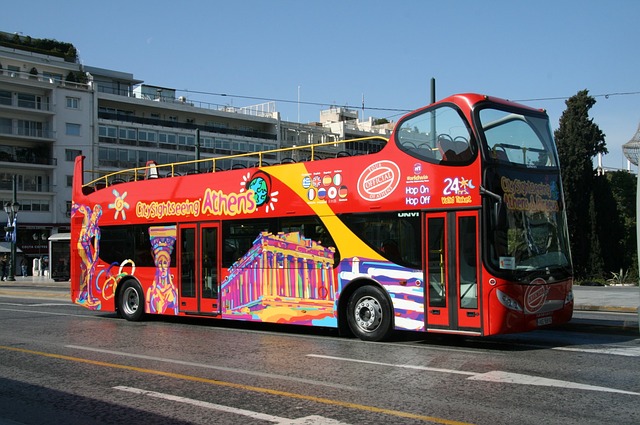


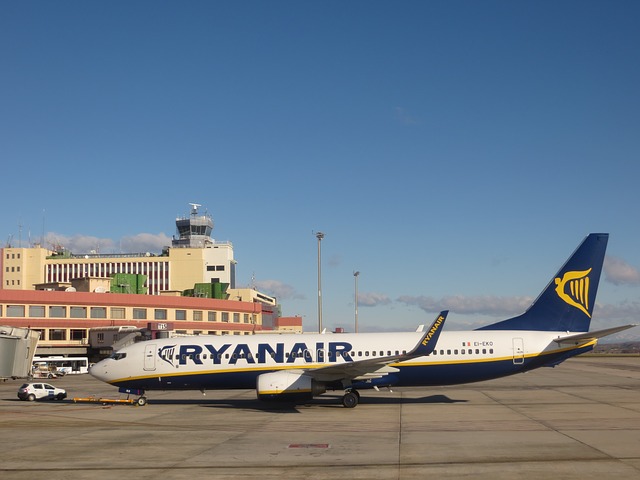

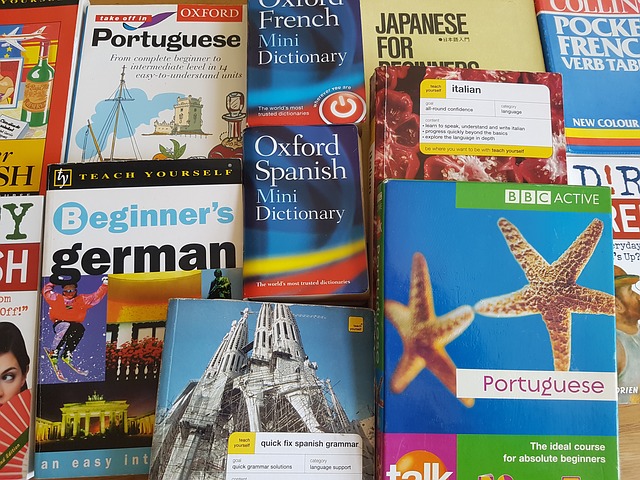

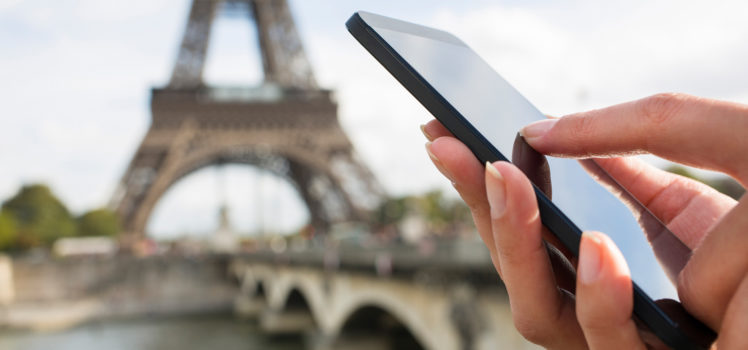



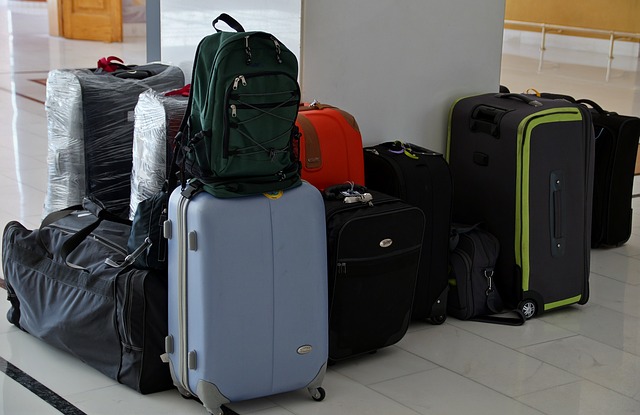


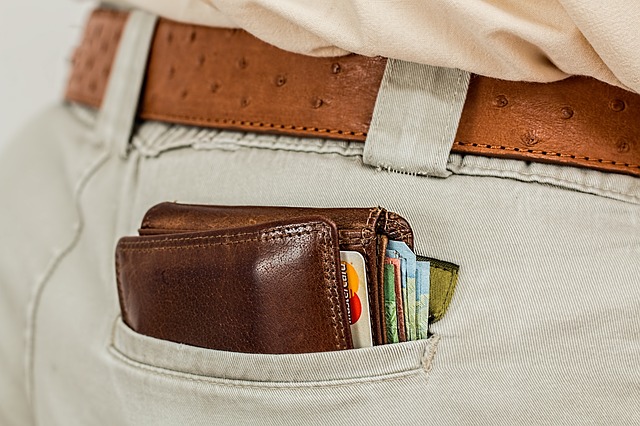

Leave a Reply